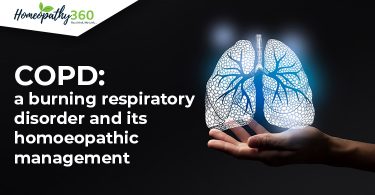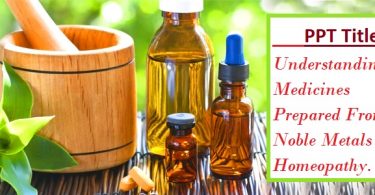Abstract
Should our baby be breast food or bottle fed? Every year this question is discussed in about 2,200,000 American homes. And the answer depends the kind of care the child will be given. Although the feeding of the babies, particularly interest mothers and physicians, it concerns all of us, both as human beings and tax payers for the attention received by the child is largely responsible for the quality of the tissues and the soul of the adult . Ultimately, the child’s development as a happy and efficient member of society may depend largely on whether it is bottle or breast fed.
Introduction
Artificial feeding is admittedly convenient for the mother, and advantageous to the physician. Its technique is well developed. Its results, frequently excellent. Bottle feeding is especially successful when mother are intelligent, or when well trained nurses can be employed. Therefore pediatricians and some obstetricians in expensive maternity hospitals – realizing that their patients expect such advice – often feel justified in advocating artificial feeding. Nevertheless, public health officials, as well as most obstetricians and the competent general practitioners who deliver the majority of babies, prescribe breast feeding as the ideal. Modern treatises on children diseases, in Europe and the United states, teach the same doctrine. Allover the country, child welfare clinics are in favor of maternal milk. The children’s bureau of the of U.S department of labor has issued excellent instruction for breast feeding. In a letter sent to new mothers of the city, the New York Health commissioner proclaims that mother’s milk is the baby’s birth right. On many important subjects, the leaders in medicine disagree. But about breast feeding they are unanimous. They believe, first, that no perfect substitute for mother’s milk has been found. Second, that almost every woman is capable of nursing her young
But all women are not convinced of the superiority of breast feeding. In the upper group about 90 percent of the children are selfishly denied mother’s milk. In contrast the `number of children in the lower income group who are artificially fed is perhaps not above 10 to 40 percent. The traditional knowledge of the care of babies, transmitted from mother to daughter for many generations, is now extinct among large groups of society. Modern mothers are ignorant of physiological functions and infant nutrition. They listen too willingly to doctors, husbands, or well meaning friends when advised to wean their children. They should think for them selves about the significance.
Child and Mother’s Womb
The child, while in the womb, is one with the mother and all organs of her body. After birth this relation ship is intended to last, although less intimately, for several months. Mother and child still remain inter-dependent. Although separate in space they are united by many chemical, physiological and mental bonds, obviously this union is weakened when a bottle is substituted for the breast.
The breast is a faultless distributer, as manufacturer of milk. On the apex of the nipple are the openings of fifteen or twenty narrow ducts. These ducts dilate into reservoirs under the dark area of the breast. They finally expand into pocket shaped alveoli lined with cells. These cells are responsible for the manufacture of milk. An extensive net work of capillaries of 300 to 400 ounces of blood is required.
The breast is not an isolated phenomenon; its activity depends upon the other organs. During pregnancy the produced by substances set free by the ovary. At the end of pregnancy the order to start making milk is given to the alveoli by the pituitary gland located at the base of the skull. In its turn, the breast exerts marked influences on uterus and ovaries, suckling bring about rhythmic contractions of the uterus. It helps the recovery of this organ after child birth. And lactation causes menstruation to cease. milk making cells , nipple , blood vessels , nerves , ovary , uterus , pituitary glands , and other glands , are the co- operating parts of a complex functional system . Thus the breast is not a mere ornament to be modified in shape and size according to the fancy of the dress makers. It is intended both for the optimum development of the child and the well fare of the mother. In suppressing its activities, white women show still less intelligence than did Chinese women when they prevented the normal growth of their feet. the breast is not isolated phenomenon ; its activity depends upon that of other organs.
The breast is a faultless distributor as well as manufacturer, of milk. For the making of an ounce of milk the passage through these capillaries of 300 to 400 ounces of blood is required
The nipple is perfectly adapted to the lips and tongue of the baby. Most rubber tests are nothing but caricatures of it. The act of suckling requires contractions of the muscles contractions of the muscles of the face, the tongue and neck, alternative movements of the lower jaw and breathing through the nose the nipple is perfectly adapted to the lips and tongue of the baby. At the same time, the infant presses the breast with its little hands. These cells are responsible for the manufacture o milk. Thus the breast is not a mere ornament, to be modified in shape and size, according to the fancy of the dress makers. It is intended both for the optimum development of the child and the well fare of the mother. Suckling is a hard task. It is the first physical effort to which man is subjected. This effort brings about the optimum development of the jaws, the nose, and the roof of the mouth. It enhances the quality of the voice.
Feeding from a bottle resembles aspirating fluid through a tube. Milk is absorbed by the child passively and rapidly. As rubber nipples are generally too long, they do not, they do not fit the mouth well. If better designed they would allow the process of suckling to take place in a more normal manner. But the modern nipple, which permits the milk literally to ooze into the infants stomach is stupidly prized by the careless nurse or hurried mother.
At the end of pregnancy, the breast sets free yellow fluid colostrum. Co-lostrum contains substances that protect the child against infection. On the second day after birth, lactation begins. Lactation requires suckling and complete emptying of the breast. It is striking fact that the amount of milk secreted by the breast increases with the needs of the child. It varies from a few ounces during the first day to 1.5 and even 2 quarts after eight months.
Its composition is also adjusted to the requirements of growing human tissues. Women’s milk contains proteins of the same nature as those constituting the body of the child. These proteins never bring about the changes in reactivity, called allergy, which cow milk may produce on account of its foreign nature. The amount of protein, phosphorus and calcium contained in mother’s milk is more precisely adjusted to the child’s requirements than any artificial formula can possibly be. As the child develops its rate of growth differs. Simultaneously mother’s milk under goes a corresponding reduction in proteins and salts. In sum, the breasts presents precisely adjusts the quantity and the composition of the milk to the changing needs of the organs, it reaches its complex end marvelous accuracy.
Such harmony does not exist between the chemical requirements of the infant and the composition of cow or goat milk, cow milk contains too large an amount of protein and salts and lacks iron. It is not digested as easily as human milk. It contains many bacteria and must be pasteurized which deprives milk of some of its qualities. Its composition is also adjusted to the requirements of growing human tissues. Harmony does not exist between the chemical requirements of the infant and the composition of the milk of cow or goat milk. Even drawn human milk with water and milk sugar is added, it becomes an excellent food for children, in spite of its defects.
Breast feeding exerts a many fold influence on infants. First it reduces mortality. In a survey of 20,000 children made in Chicago by Dr. Clifford G. Grulee , the mortality of the artificially fed children was ten times greater than that of those breast-fed. Campaign has brought about a 66percent decrease in the death rate of infants during the past 30 years. If your baby is breast – fed, it has three to ten times a better chance of surviving that dangerous first year!
Second, the occurrence of diseases is also decreased. All physicians agree on this point. In the statistics compiled by Dr. Grulee 64 percent of the artificially fed children were affected with disease of the lungs, throat, stomach and intestine.
When mothers have proper food, rest and exercise, their health is distinctly improved by nursing their baby. After child birth, the contractions of the womb brought about by suckling prevent the occurrence of hemorrhage. Also they help the organ to return to its normal condition. As menstruation ceases, breast activity gives a period of rest to ovaries. Proper diet during lactation is most important. Physicians should devote more time to searching for a proper diet for nursing women than for artificial milk formulas. While feeding their babies, mothers learn a great deal about how to live. Also about the ill effects of tobacco, alcohol, and coffee which enter the blood and directly affect the child. They have to lose many bad habits. They can not afford to be nervous or temperamental. The breast suffers no ill effect from lactation activity. After weaning the gland decreases in size and regains its normal shape. But proper attention, in particular adequate suckling support, should be given to it before and during lactation. Sagging breasts are the result of insufficient care. When mothers have proper food, rest and exercise their health is distinctly improved by nursing their baby. After child birth, the contractions of the womb brought about by suckling, prevent the occurrence of hemorrhage. Also they help the organ to return to its normal condition. When members have proper food rest and exercise, their health is distinctly improved by is distinctly improved by nursing their babies. After child birth the contractions of the womb brought about by suckling, prevent the occurrence of hemorrhage. Also they help the organs to return to its normal conditions. An intelligent Woman derives great profit from suckling in connection with present and future health.
Breast feeding, as is well known is a hard and monotonous task for a few months , the mother becomes the slave of the child, who has to be fed at three or four hours intervals At the same time, she must attend to her house hold duties . She needs self discipline. She has less time for out side work, social obligations, traveling, and recreation. In exchange, she receives the priceless love. She also has the joy of giving more health, strength and beauty to her baby. That is the capacity for a happy life although love is not self seeking she prepares her own happiness in the manner for most of sorrows of parents come from the physical and mental defects of their off spring.
Why are so many children compelled to feed from a bottle instead of the breast of their mother?
Lactation and suckling are natural functions, if performed with appropriate care; there effects ought to be beneficial. We know the breast feeding contributes to achieving the physical and mental development of women.
The breast suffers no ill effect from lactation activity. After weaning, the gland decreases in size and regains its normal shape. But proper attention, in particular adequate support should be given to it before and during lactation. Sagging breasts are the result of insufficient care and defective nutrition not of the actual suckling of the young. If trained by wise physicians, women keep their beauty even after having suckled several babies. Inflammation of the nipple and abscesses of the breast can easily be prevented by medical supervision. Suckling has never been shown to predispose the gland of cancer.
It is said that seven out of ten babies in maternity hospitals are weaned within two weeks. Should physicians or mothers be at fault for this state of affair while obstetricians advise breast suckling, knowing how important it is to the mother’s convalescence, pediatricians catering to the well –to-do not favor it is much as they should. Women have an exaggerated predilection for bottle feeding especially when they are well to-do. For what reasons are breast feeding is so often discontinued?
According to Dr. Henry Dietrich of Los Angeles, 50 different reasons were considered as valid excuses in 370 cases for depriving children of their mother’s milk. Some of the reasons were insufficient and defective milk, failure of the baby to gain weight, weakness of the mother, cracked nipples and social duties. As a matter of fact these excuses are not valid. Ninety percent of mothers are able to nurse their babies. only pregnancy, tuberculosis, cancer and a few other diseases absolutely prevent breast feeding.
The true reasons for giving up breast feeding are both physiological and moral. Modern women are not prepared by their education and habits of life for maternity and its consequences. They are not taught the functional significance of the breast. They are allowed to contract absurd dietary habits. Thus during pregnancy and lactation, they do not absorb the food indispensable for abundant milk production. No scientific care is taken of nipples and breast which should have gently applications of lanolin from time to time all during pregnancy. Mothers do no realize the breast feeding is. Like child bearing itself, an essential organic function, they are ready to be humored by over jealous pediatricians into bottle feeding. Many mothers believe that their work, their carrier their social pressures are more important than the care of their children. They do not understand that their primary duty is mother hood. No mother should complain of her hard ships. A healthy kid is the supreme master piece.
In nursing her child, the mother fills her high duty with regard to the community, and the community must give the educational, moral and material help indispensable to the fulfillment of this duty.
Homoeopathic Remedies
Asafoetida – Deficient of milk with over sensitiveness
Pulsatilla – Suppression of milk in depressed and tearful women
Ricinus, Urtica Urens – Non appearance of milk
Chamomilla – Suppression of milk after a fit of anger
Source: Dr B S Suvarna
Edited by: Dr Abha





